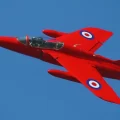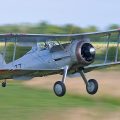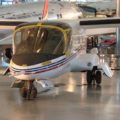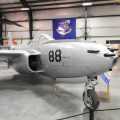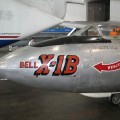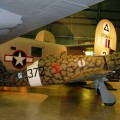
Bell X-5 | |
|---|---|
| Maa | Yhdysvallat |
| Rooli | Tutkimuslentokoneet |
| Ensimmäinen lento | 20 June 1951 |
| Rakennettu | 2 |
Nniiden Kello X-5 was the first aircraft capable of changing the sweep of its wings in flight. It was inspired by the untested wartime P.1101 design of the German Messerschmitt company. In contrast with the German design, which could only have its wing sweepback angle adjusted on the ground, the Bell engineers devised a system of electric motors to adjust the sweep in flight.
Lähde: Bell X-5 Wikipediassa
| Bell X-5 Walk Around | |
|---|---|
| Photographers | Vladimir Yakubov |
| Localisation | The National Museum of the USAF |
| Photos | 74 |
Aiheeseen liittyvät sarjat:
| Bell X-5 Walk Around | |
|---|---|
| Photographers | John Heck |
| Localisation | The National Museum of the USAF |
| Photos | 16 |
Etsi sarjoja eBaysta:
See also:
The Bell X-5 was an experimental aircraft that pioneered the concept of variable-sweep wings. It was based on the German Messerschmitt P.1101 design, which was captured by the US forces at the end of World War II. Unlike the P.1101, which could only adjust its wing sweep on the ground, the X-5 had a mechanism that allowed the pilot to change the wing angle in flight, from 20 to 60 degrees. This gave the X-5 the ability to adapt to different speed regimes and flight conditions.
The X-5 was built by Bell Aircraft Corporation and first flew in June 1951. Two prototypes were produced and tested by the US Air Force and the National Advisory Committee for Aeronautics (NACA). The X-5 demonstrated the benefits of variable geometry for high-performance aircraft, but also revealed some serious stability and control problems, especially at high sweep angles. In October 1953, one of the X-5s crashed during a spin test, killing the pilot. The other X-5 continued to fly until 1958, when it was retired and donated to the National Air and Space Museum.
Katsottu: 995


